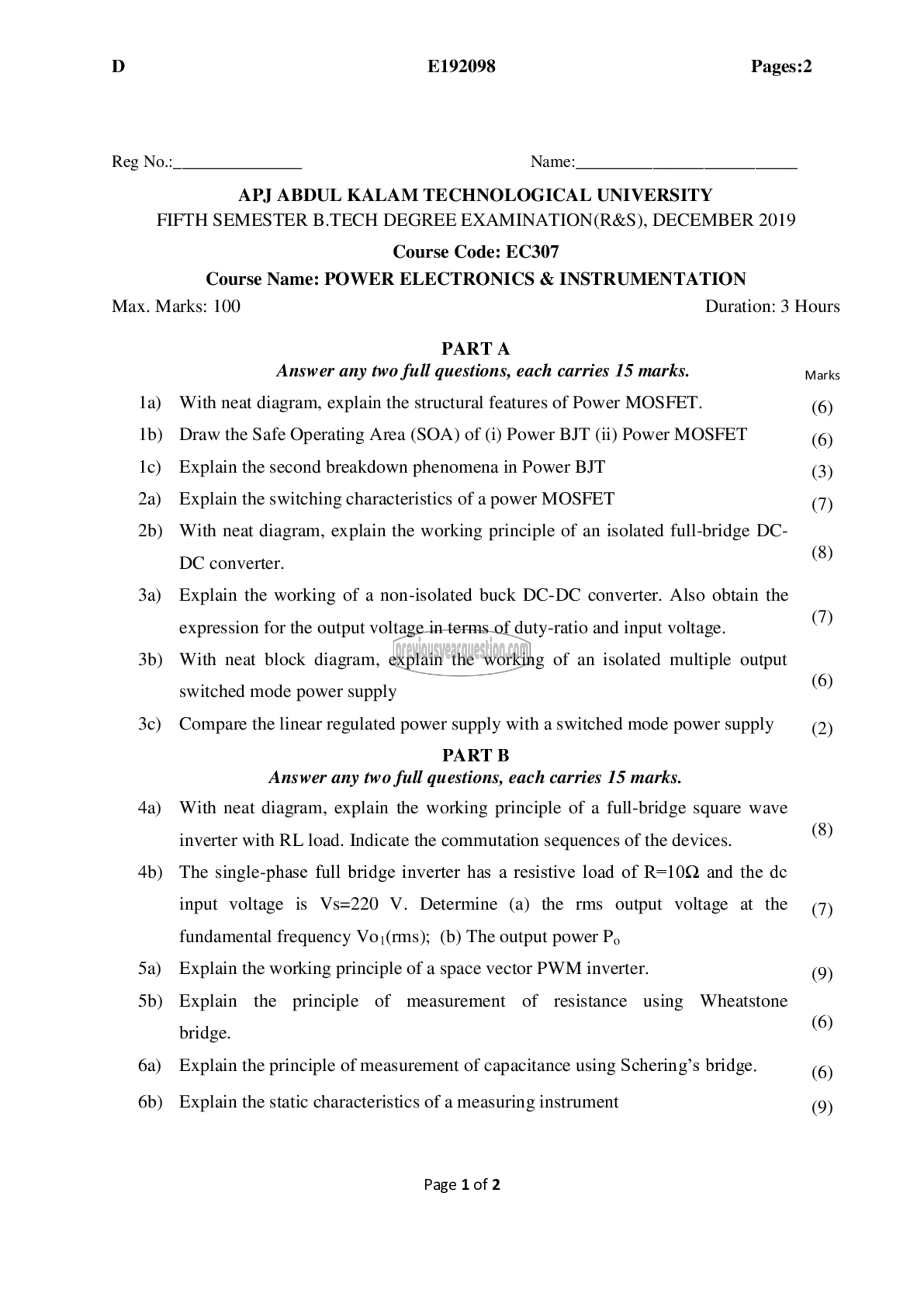APJ ABDUL KALAM TECHNOLOGICAL UNIVERSITY Previous Years Question Paper & Answer
Semester : SEMESTER 5
Subject : Power Electronics & Instrumentation
Year : 2019
Term : DECEMBER
Scheme : 2015 Full Time
Course Code : EC 307
Page:1
Reg No.:_ Name:
FIFTH SEMESTER B.TECH DEGREE EXAMINATION(R&S), DECEMBER 2019
Max. Marks: 100
la)
10)
Ic)
2a)
2b)
3a)
3b)
3c)
4a)
4b)
58)
5b)
6a)
6b)
E192098 Pages:2
APJ ABDUL KALAM TECHNOLOGICAL UNIVERSITY
Course Code: EC307
Course Name: POWER ELECTRONICS & INSTRUMENTATION
PARTA
Answer any two full questions, each carries 15 marks.
With neat diagram, explain the structural features of Power MOSFET.
Draw the Safe Operating Area (SOA) of (i) Power BJT (ii) Power MOSFET
Explain the second breakdown phenomena in Power BJT
Explain the switching characteristics of a power MOSFET
With neat diagram, explain the working principle of an isolated full-bridge DC-
DC converter.
Explain the working of a non-isolated buck DC-DC converter. Also obtain the
expression for the output voltage in terms of duty-ratio and input voltage.
With neat block diagram, explain the working of an isolated multiple output
switched mode power supply
Compare the linear regulated power supply with a switched mode power supply
PART B
Answer any two full questions, each carries 15 marks.
With neat diagram, explain the working principle of a full-bridge square wave
inverter with RL load. Indicate the commutation sequences of the devices.
The single-phase full bridge inverter has a resistive load of R=10Q and the de
input voltage is Vs=220 V. Determine (a) the rms output voltage at the
fundamental frequency Vo;(1ms); (b) The output power و
Explain the working principle of a space vector PWM inverter.
Explain the principle of measurement of resistance using Wheatstone
bridge.
Explain the principle of measurement of capacitance using Schering’s bridge.
Explain the static characteristics of a measuring instrument
Page 1 of 2
Duration: 3 Hours
(8)
(7)
(6)
(2)
(8)
(7)
(9)
(6)
(6)
(9)
